Recent Storm Damage Posts
Tracking Down Leaks When It Rains | SERVPRO of Sanibel/Captiva Island/Ft.Myers Beach
2/21/2024 (Permalink)
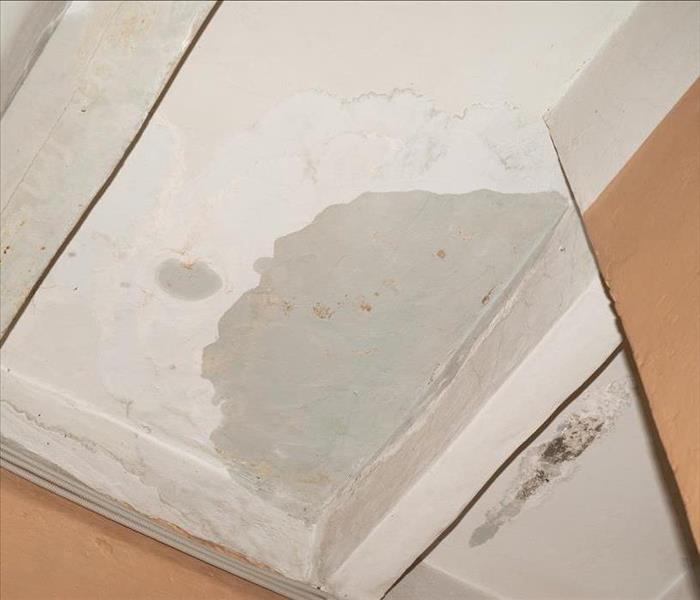 When an unexpected storm invades your home, it can be extremely damaging. Call SERVPRO of Sanibel/Captiva Island/Ft. Myers Beach for help!
When an unexpected storm invades your home, it can be extremely damaging. Call SERVPRO of Sanibel/Captiva Island/Ft. Myers Beach for help!
When it rains, it can really pour around here! While we might be grateful for the rain during dry parts of the year so our lawns and gardens get a drink, you certainly don’t want to be feeling the rain while you are inside your home.
Leaks or home issues can quickly become apparent when it starts to rain, so tracking down the source of the leak right away can help you minimize the potential for water damage. Check out these common places for water to get in when it rains in the Sanibel community.
Windows and Doors
We can all enjoy a nice breeze flowing through our homes now and again, but make sure they are shut tight during a storm or even a gentle rain. Rainwater can easily get through screens and linger on your windowpanes and sills.
That water can leak down your walls and eventually get behind your walls. Once that happens, structural issues can become apparent and mold can even start to grow.
The same goes for your doors! Keep everything shut up tight and address any gapping or cracks around your doors and windows right away. Structural aging of your home can lead to sagging of windows and door frames, and a single gap could be the culprit for a serious rainwater leak.
Your Roof
We all know how important our roofs are, especially during hurricane season. They have the really important job of keeping us safe and dry while Mother Nature rages on outside. That naturally makes them one of the more common places to experience damage. If you notice the leak is coming from somewhere near your ceiling, get up on your roof as soon as it is safe to do so and do some investigating.
A single missing shingle or gap in your roofline could be the culprit that is causing your watery mess. If you don’t see anything on the outside, head into your attic and start scanning the ceiling and walls. Wet insulation, mold growth and the smell of mildew can help point you in the right direction.
Cracked Foundation
Water is sneaky, and it can seep and leak into virtually every area of your home. The tiniest little gap or crack in your foundation can easily allow water to sneak by and flow onto your floors.
If your basement tends to get wet every time it rains or you struggle with flooding issues often, it may be time to do some investigating around your foundation and have any repairs addressed immediately.
Our team will help you do all this and more! We can handle your repairs to prevent the damage from occurring again, but we can also help you clean up and recover from any water damage you experienced. We can restore walls, floors and ceilings, and we will sanitize everything to ensure mold cannot grow in your newly finished space.
We can help you recover from water damage faster. Contact SERVPRO of Sanibel/Captiva Island/Ft. Myers Beach right away
What to do When Sewer Backup Threatens Your Business Property
8/20/2022 (Permalink)
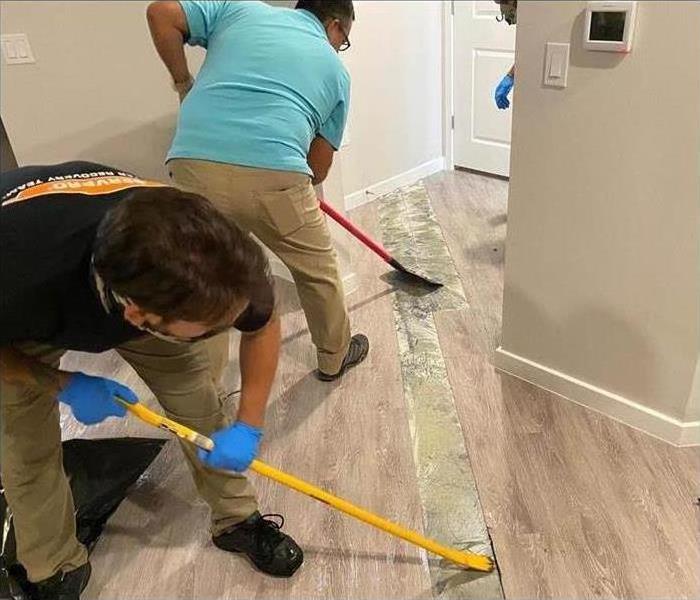 Sewage cleanup in Sanibel, FL.
Sewage cleanup in Sanibel, FL.
If your business is located in Sanibel, FL, it may be at risk for flooding and sewer backup during the next storm. Knowing what preventive measures to take, and what to do if your business does flood, can help you in the event flooding does occur.
Reasons Backup Occurs
There are a number of factors that can play into sewer backup. These may include:
- Excessive storm and rain water which can cause overflow
- Recent construction that changes the landscape and redirects water into the sewer
- Fresh pavement with a new drainage grade can change the runoff flow
- Failure to regularly clean a septic system can cause a backup
If you think there’s a chance your business might face sewer back up with the next storm, it’s best to take preventative measures.
Take Preventive Measures
Flood water is classified as black water because some of it can come from contaminated sources such as a sewer. This means clean-up can require extra sanitation steps. Taking preventive measures beforehand may help mitigate the damage. Ensure then trap plugs are clean, snug, and secure as these can filter debris that may back up in your pips. Some buildings may also qualify for a backwater check valve.
Conduct Cleanup as Quickly as Possible
In the event you do find flooding its best to take care of the cleanup process as quickly as possible. Remember to turn off the electricity to the flooded area before entering. Remove items from the flooded area and be sure to clean and dry them. Because flood water is classified as black water, everything should be sanitized as well. You will also need to clean, dry and sanitize the flooded area after the water has been removed. A professional service may also be able to help.
Flooding from sewer backup can cause a number of problems for your business. This is why it’s important to take preventive measures beforehand. If excessive rain water does lead to sewer flooding at your business, knowing what to do beforehand can help save valuable time.
Will Insurance Cover My Business After a Storm?
7/29/2022 (Permalink)
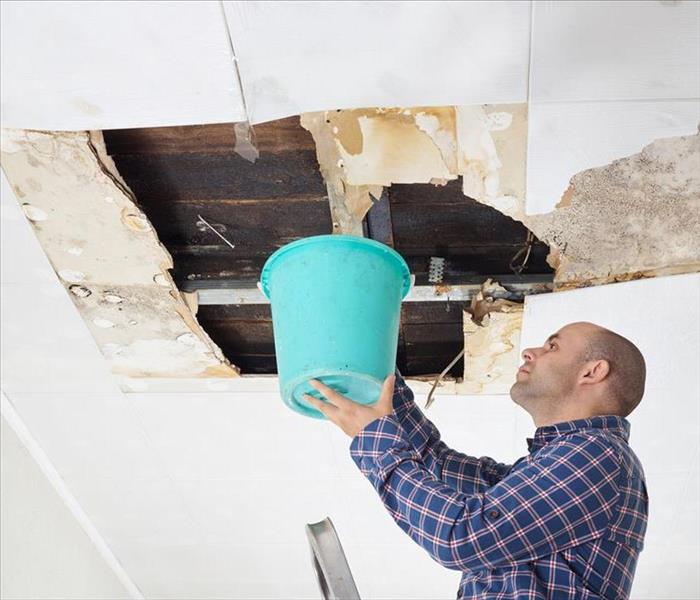 Roof damage due to a storm.
Roof damage due to a storm.
Business owners may find themselves wondering if their property in Iona, FL is covered if the building is damaged by a storm. If you have commercial insurance, the short answer is yes, in most cases. However, it's worth taking a look to see what exactly your storm insurance covers.
What Does a Standard Policy Cover?
Typically, commercial insurance will cover losses or damage caused by:
- Fires
- Wind storms other than hurricanes
- Hail storms
- Tornadoes
If your roof sustains damage from a storm and water gets in the building, most policies will include insurance coverage on this type of water damage if the roof was in good condition prior to the storm.
What Is Not Covered in a Standard Policy?
Most commercial policies will not cover damage from hurricanes, earthquakes or flooding. Water damage caused by rising water or heavy rain will require coverage from a supplementary insurance policy. Sewage backup may also fall into the category of flooding, as heavy rains can cause sewer mains to back up into buildings. If you do not have separate insurance for flooding, consider purchasing it for your property. Flooding can happen in any geographic location, and having coverage available for emergency restoration services is a good idea.
What Are Hurricane and Windstorm Deductibles?
Businesses in coastal areas covered by storm insurance may have a wind damage deductible. Hurricane deductibles apply to damage caused solely by hurricanes. Wind storm or wind/hail deductibles apply to any kind of wind damage. In most cases, the insurance company will determine which deductible will apply to a claim. Deductibles may be a dollar amount or a percentage of the property's value. Options vary by state and are subject to regulations, so be sure to review your policy with your agent if you need information about your insurance coverage.
It's best to know your storm insurance coverage before a disaster strikes. Review your policy with your agent to make sure you are prepared for a weather emergency.
The Cleanup Process After a Flood
5/25/2022 (Permalink)
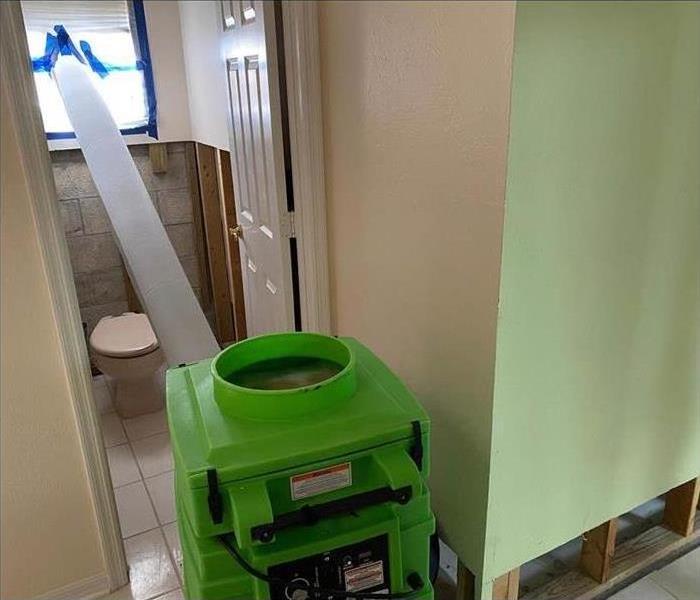 Don't let standing water take over any part of your home.
Don't let standing water take over any part of your home.
After a Flood, How to Clean Up
Dealing with the aftermath of a flood can be devastating for homeowners. Looking at the remnants of their lives as they float contaminated by potential black water is a struggle most people fear. Thankfully, floods do not have to destroy all memories; through content cleaning and the disaster cleanup process, water remediation services in Captiva Island, FL, claim more than you think can be salvaged.
1. Water Excavation
Still, before a company or homeowner can discover what contents are potentially salvageable, they must remove the water from the property. Excavation can begin immediately if the flooding is only located on the property. However, if the area is flooded, you will likely have to wait until exterior water levels recede.
Once water can be removed, it is performed by equipment and not manual means. Services will use pumps and shop vacs to eliminate the water as quickly as possible.
2. Debris Elimination
Following the water excavation, a remediation service will walk the disaster site to process all debris. Anything that is clear trash or unsalvageable will be appropriately discarded. If contents were affected by black water, the service would take special precautions to ensure everyone's safety.
3. Property Drying
When the site is clean of water and debris, the company you choose can begin drying the structure. Drying time will vary based on the extent of the flooding. The team will use fans, air movers, and dehumidifiers to help speed the process along.
4. Content Cleaning and Restoration
Any items that can be salvaged will likely be moved offsite to be cleaned and treated. The restoration company will focus on restoring the house to pre-disaster conditions by installing new drywall, flooring, etc.
Dealing with the aftermath of floods is about more than content cleaning. With the help of mitigation service, homeowners can successfully navigate the cleanup and restoration process.
Understanding Mold in Your Business
5/5/2022 (Permalink)
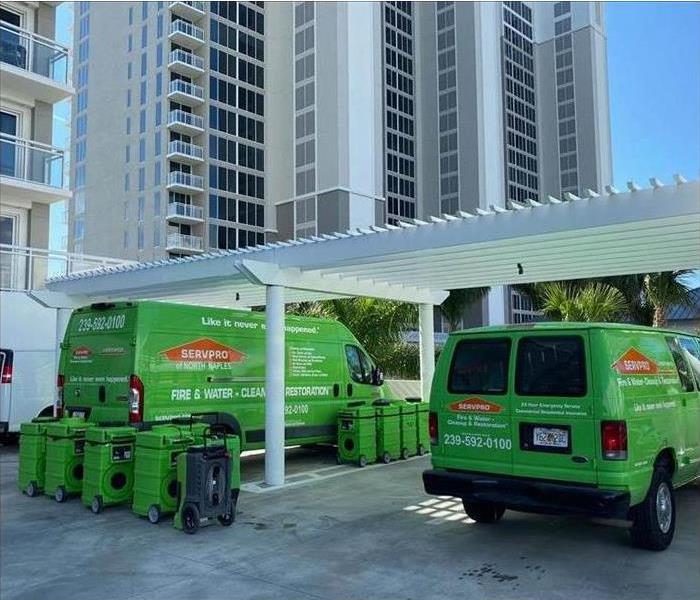 If you are in need of a fungus cleanup for your business in Sanibel, FL it is important to take the proper steps to remove the mold properly.
If you are in need of a fungus cleanup for your business in Sanibel, FL it is important to take the proper steps to remove the mold properly.
Understanding Mold in the Workplace
Mold growth can appear on damp surfaces within 24 to 48 hours. Mold reproduces by tiny spores that travel through the air. Once they land in a new location with moisture, they will start to destroy your building in Fort Myers, FL. This can cause a lot of expensive damage. Here are some questions that you can use to understand this fungus.
Why Is There Mold?
Buildings can develop mold growth after a storm that causes flooding. Some of the big problems that occur during storms that lead to mold include:
- Flooding
- Sewage backups
- Roof leaks
- Flooded basements
- Open windows
- Foundation problems
How Do You Dry a Building?
The best way to dry your building is to hire a storm restoration company. Otherwise, you can do this on your own with some bleach, fans, and dehumidifiers.
What Do You Need To Clean It?
You will need personal protective gear to clean mold yourself, such as gloves and a mask. Aside from this, you will need standard cleanup items, including buckets, scrub brushes, brooms, trash bags, shop vacs, and sponges. Finally, you will need something to kill the mold, like a detergent or bleach.
What if You Have Health Problems?
Everyone is regularly exposed to mold spores inside and outside of buildings. However, standing water makes the risk from mold spores much greater, so it is better for people who have health problems to avoid working inside buildings that have recently experienced flooding.
How Can You Prevent Mold in the Future?
It is not possible to remove all mold growth from your business. However, there are many ways that you can limit the amount of mold that grows in the future. The best methods include stopping any leaks, keeping your business clean, keeping surfaces dry, and routinely disinfecting areas at risk for mold.
While bacteria may be the first contaminant on your mind after a storm floods your business, you should also be concerned about mold. This fungus can do costly damage, so you need to take the proper steps to dry your building and prevent mold in the future.
After the Flood: Make the Most of Your Insurance Claim
1/5/2022 (Permalink)
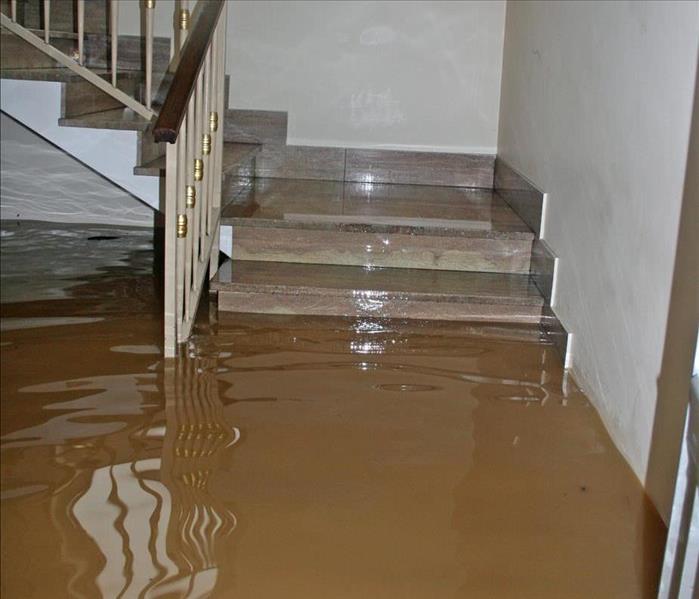 Flood damage in Estero Island, FL.
Flood damage in Estero Island, FL.
Flood Claim
Now that the flood waters have receded, it’s time to survey the damage and take steps to restore your property. As the holder of a flood insurance policy, you are already ahead of the curve—but there still may be significant work to be done before you can collect on a flood claim. Here are some steps that can help guide you through the process in Estero Island, FL.
1. Stay safe. Take every precaution to be certain your home is safe to enter and that there is no threat of further flooding, electrical mishap or collapsing infrastructure. Assume that water is unsafe for human consumption.
2. Contact your insurance company. Contact your insurance claims adjuster as soon as possible. Provide him or her with cell phone and/or email contact information so you will be readily available for an onsite visit.
3. Document the damage. Take photos of the damage to document your loss. If you have pictures of the areas prior to the flood, it would be useful to have them on hand for comparison.
4. Start the cleanup. Begin the cleanup process and call a restoration specialist in Estero Island, FL, if needed. If the adjuster has not yet made his or her assessment, be sure to note everything you intend to include on the flood claim. Make a list of lost and damaged items and include dates of purchase, estimated values and receipts, if possible.
5. Retain evidence. Keep any damaged materials you may remove from the house as the adjuster may need to see them for proof of loss purposes. If possible, store these damaged materials outside on your property.
6. Work with your insurance company. Once the adjuster arrives and finishes the assessment, you will likely be asked to sign a proof of loss statement that will follow specifications as set forth in the insurance policy.
Be sure to file your flood claim within 60 days of the actual flood event. By following these steps, you can be assured of the greatest possible chance for a successful insurance settlement.
 When an unexpected storm invades your home, it can be extremely damaging. Call SERVPRO of Sanibel/Captiva Island/Ft. Myers Beach for help!
When an unexpected storm invades your home, it can be extremely damaging. Call SERVPRO of Sanibel/Captiva Island/Ft. Myers Beach for help!




 24/7 Emergency Service
24/7 Emergency Service




